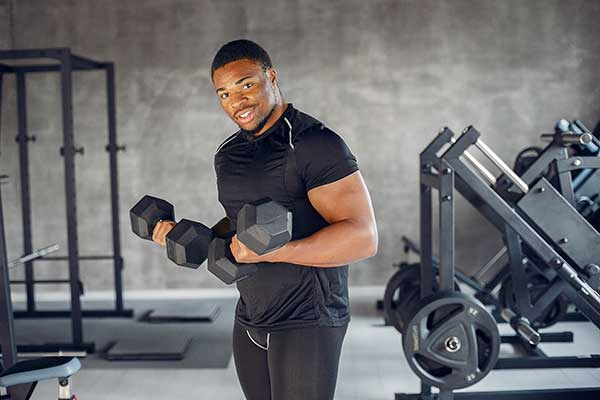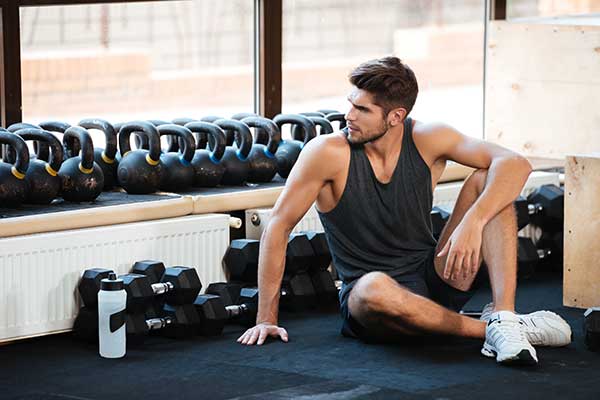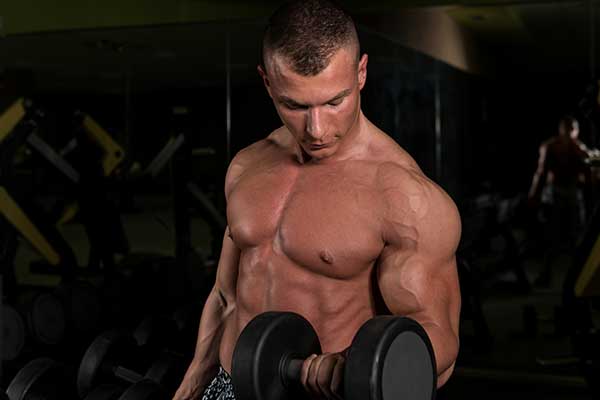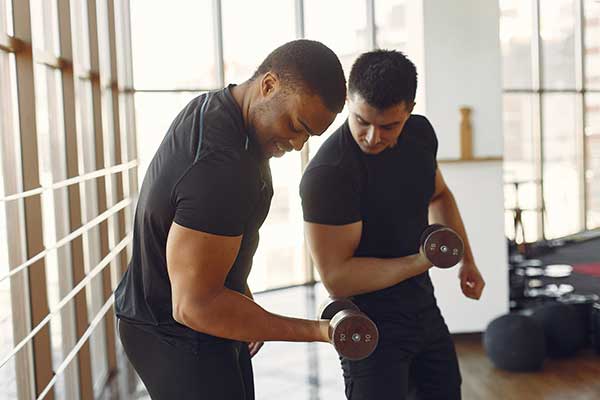Bicep Exercises You Can Do Using Your Own Body Weight
Introduction to bodyweight exercises
Are you looking to build impressive biceps without the need for heavy weights or expensive gym memberships? Look no further! Bodyweight exercises are a fantastic way to sculpt those arms using nothing but your own body. Whether you’re at home, in the park, or traveling, these exercises can fit seamlessly into your routine.
Bicep workouts often conjure images of dumbbells and machines. But with bodyweight training, you can achieve great results by leveraging your own weight. This approach not only enhances strength but also improves overall functional fitness. Ready to discover how simple moves can help carve out those powerful muscles? Let’s dive into some incredible bicep exercises you can do using your own body weight!
Benefits of using bodyweight for bicep workouts
Using bodyweight for bicep workouts comes with a plethora of advantages. First, it’s incredibly accessible. You can do these exercises anywhere, without any equipment. This means no gym membership is required.
Bodyweight exercises also promote functional strength. They engage multiple muscle groups at once, helping you develop overall coordination and balance. When your biceps work in conjunction with other muscles, you build better performance for everyday activities.
Another benefit is the reduced risk of injury. Bodyweight movements typically place less strain on joints than heavy lifting does. This makes them suitable for beginners or those recovering from injuries.
Additionally, this method offers versatility in training intensity. By adjusting your body position or tempo, you can easily make each exercise more challenging as your strength improves.
Working out using just your own weight fosters greater mind-muscle connection and awareness during movement!
Top 5 bodyweight bicep exercises:
Bodyweight exercises can be incredibly effective for building bicep strength. Here are five standout movements that leverage your own weight.
Push-up variations, like diamond push-ups, target the biceps while also engaging your chest and triceps. The closer hand placement emphasizes the arm muscles more intensely.
Pull-up variations, particularly chin-ups, activate those biceps beautifully. As you lift your body towards the bar with an underhand grip, you’ll feel the burn in no time.
Dips offer another fantastic option. By using parallel bars or a sturdy surface behind you, this exercise primarily works the triceps but also recruits significant bicep effort when performed correctly.
Inverted rows are excellent for targeting multiple muscle groups. With your body suspended beneath a bar at an angle, pulling yourself up engages both back and arms effectively.
Isometric holds, such as holding a pull-up position halfway up or flexing during dips, create intense tension in those stubborn bicep muscles without any movement.
A. Push-up variations
Push-up variations are a fantastic way to target your biceps while also engaging multiple muscle groups. The classic push-up primarily works the chest, shoulders, and triceps, but by altering your hand positioning or body angle, you can shift more focus onto those bicep muscles.
Try diamond push-ups for an intense challenge. Place your hands close together under your chest in a diamond shape. As you lower yourself down, you’ll feel the burn in both triceps and biceps alike.
Another effective variation is the archer push-up. This move requires shifting your weight from side to side as you go down, emphasizing one arm at a time. It’s great for building strength and stability.
Also consider decline push-ups where your feet are elevated on a surface. This adjustment targets different areas of the upper body and provides an additional challenge to enhance overall muscle engagement.
B. Pull-up variations
Pull-up variations are fantastic for targeting your biceps while engaging multiple muscle groups. They primarily work the back, shoulders, and core, but with specific adjustments, you can make them ideal for bicep development.
Standard pull-ups are a great start. Grip the bar with palms facing away from you and pull yourself up until your chin is above the bar. This classic move builds strength and endurance in your arms.
For more emphasis on the biceps, switch to chin-ups by reversing your grip; palms should face toward you. This slight change recruits those arm muscles even more effectively.
If you’re looking for a challenging twist, try commando pull-ups where you alternate between normal and chin-up grips as you ascend.
These variations enhance not only strength but also stability in your upper body. Incorporating them into your routine will diversify your workouts while honing in on those coveted bicep gains.
C. Dips
Dips are a fantastic bodyweight exercise that targets your biceps, triceps, and shoulders. This compound movement is versatile and can easily be performed on parallel bars or even the edge of a sturdy chair.
To execute dips effectively, position your hands shoulder-width apart on the surface. Lower your body until your elbows form about a 90-degree angle. Keep your core engaged to maintain stability throughout the motion.
As you push back up to the starting position, focus on squeezing those bicep muscles for maximum engagement. You’ll feel this in more than just your arms—your chest will also get some love.
For added intensity, elevate your feet or slow down each repetition. Incorporating variations like bench dips can offer different challenges while still emphasizing those important muscle groups. Make dips a regular part of your routine to build strength and improve overall upper body definition.
D. Inverted rows
Inverted rows are a fantastic bodyweight exercise for targeting the biceps while also engaging the back and core. This movement can be easily performed using a sturdy table, bar, or any elevated surface that can support your weight.
To execute an inverted row, lie underneath the bar with your body straight. Grasp it with an overhand grip that’s shoulder-width apart. Keep your feet planted on the ground and your heels raised so that only your upper back supports you.
Pull yourself up towards the bar by bending your elbows. Focus on squeezing those bicep muscles as you lift. Lower yourself slowly to complete one rep—control is key here.
Feel free to adjust your angle by raising or lowering your feet to increase difficulty. The more horizontal you are, the tougher it gets!
E. Isometric holds
Isometric holds are a powerful way to engage your biceps without any equipment. They focus on muscle tension rather than movement, making them perfect for building strength and endurance.
One effective isometric hold involves the classic push-up position. Simply lower yourself halfway down and hold that position. Your arms will feel the burn as your biceps work hard to maintain stability.
Another option is the wall sit, where you press your back against a wall with knees bent at 90 degrees. While this primarily targets legs, maintaining this position also engages your core and arms significantly.
To maximize results, aim for 20 to 30 seconds per hold. You can gradually increase time as you progress. Isometric holds not only enhance muscle definition but also improve overall grip strength—an essential component in many exercises!
How to properly perform each exercise
To get the most out of your bicep exercises, proper form is essential. Start with push-up variations. Keep your hands shoulder-width apart and lower your body until your chest almost touches the ground. Engage those arms as you push back up.
For pull-ups, grab the bar with palms facing away from you. Pull yourself up until your chin passes the bar while keeping a slight arch in your back.
Dips require parallel bars or two sturdy surfaces. Lower yourself slowly by bending at the elbows, then press through to return to starting position.
Inverted rows can be done using a low bar or suspension trainer. Grab hold of it and lean back, pulling yourself towards it while keeping that core tight.
For isometric holds like wall sits or plank holds targeting biceps, maintain tension without movement for maximum effectiveness—hold those positions steadily!
Creating a balanced bodyweight bicep workout routine
Creating a balanced bodyweight bicep workout routine is all about variety and structure. Start by incorporating multiple exercises that target not just the biceps, but also supporting muscle groups.
Aim for a mix of pushing and pulling movements to ensure overall arm development. For instance, pair push-up variations with pull-ups or inverted rows. This approach promotes muscular balance while preventing overuse injuries.
Consider your fitness level when designing your routine. Beginners might start with fewer reps and sets, gradually increasing intensity as strength improves.
Also, don’t forget to include rest days in your regimen to allow muscles ample time to recover and grow stronger.
Track your progress regularly by noting repetitions or duration achieved in each session; this will motivate you to keep challenging yourself further.
Tips for progression and challenging yourself
To progress in your bodyweight bicep exercises, focus on increasing the difficulty over time. You can start by adjusting your body position. Elevating your feet during push-ups or using a wider grip while performing pull-ups can intensify the workout.
Adding variations is another effective strategy. For instance, try diamond push-ups to target different parts of your biceps or switch from standard dips to straight bar dips for more challenge.
Experiment with tempo as well. Slowing down the movement increases time under tension, which can lead to greater muscle growth.
Don’t forget about volume; add extra sets or reps gradually as you build strength and endurance. Tracking your progress helps you stay motivated and see improvements over time.
Listen to your body. Pay attention to how each exercise feels and adjust accordingly—this will ensure you’re both challenged and safe during workouts.
Conclusion:
Bodyweight exercises offer a fantastic way to build strength without the need for equipment. When it comes to targeting your biceps specifically, there are plenty of effective options available right at your fingertips. By incorporating these bodyweight bicep exercises into your routine, you can enjoy numerous benefits, including improved muscle tone and enhanced functional fitness.
The variety of push-up variations, pull-ups, dips, inverted rows, and isometric holds allows you to challenge yourself in different ways while keeping your workouts engaging. Each exercise targets the biceps effectively and can be adjusted based on your fitness level.
Creating a balanced workout routine with these movements will not only help you achieve stronger arms but also promote overall upper body strength. Remember that progression is key; as you become more comfortable with each exercise, explore ways to increase intensity or change angles for an added challenge.
Staying consistent with this type of training will lead to impressive results over time. Embrace the versatility of body weight training and watch as your biceps grow stronger without ever needing to step foot in a gym.
- About the Author
- Latest Posts
Johnnie D. Jackow Sr., the founder and CEO of Total Body Fitness, Worldwide, has a long-standing career in the fitness industry. He began as a certified personal trainer in the mid-90s and soon after authored his first weight loss book in 1998. This led to the launch of Total Body Fitness, Nationwide in the USA at the same time. Johnnie gained recognition as the fitness guru of his time, running infomercials on local TV late at night in Houston, Texas. Over the years, he has helped more than 40,000 individuals from all over the world achieve their health and fitness goals. With over 60,000 hours of documented training in integrative functional medicine, he completed his PhD in human physiology in 2010. His primary objective is to assist people in reaching their health and fitness goals through alternative approaches rather than relying solely on conventional medicine and pharmaceutical drugs. Today, with almost three decades of experience under his belt, Johnnie continues to be a leader in health and fitness.







